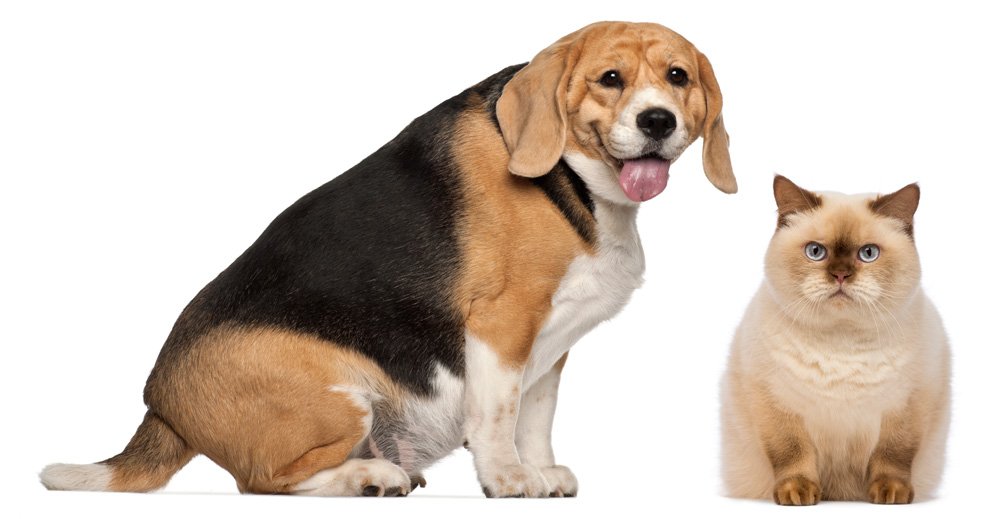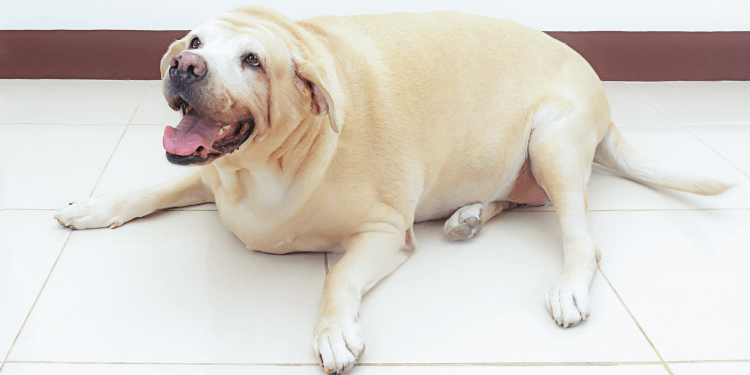Discover how to manage and prevent pet obesity. Learn about causes, effective strategies, and resources for keeping your pet healthy and active.
Pet obesity is a big problem for many pets. When pets are overweight, they can have serious health issues like diabetes and heart problems. In this article, we will talk about what pet obesity is and how you can manage it. You’ll learn about the causes, like diet and exercise, and how to prevent it. We will also share tips on how to keep your pet healthy and active. Stay with us to find out how to help your pet live a better, healthier life.
Understanding Pet Obesity
Pet obesity is a growing concern among pet owners and veterinarians alike. Obesity in pets, which refers to excessive body fat that negatively impacts their health, can lead to serious conditions like diabetes, heart disease, and joint problems. It’s crucial to recognize the signs early and understand the underlying causes to effectively manage and prevent this condition.

What is Pet Obesity?
Pet obesity occurs when an animal’s body fat exceeds a healthy level. This condition is typically identified by a noticeable increase in weight and fat accumulation. Common signs of obesity in pets include difficulty in movement, excessive panting, and a noticeable increase in body size.
Causes of Pet Obesity
Several factors contribute to pet obesity:
- Diet and Nutrition Factors: Overfeeding and a diet high in calories can lead to weight gain. Pets consuming more calories than they burn will likely become overweight.
- Lack of Exercise: Pets that do not engage in regular physical activity are at a higher risk of becoming obese. Insufficient exercise can result in weight gain and poor health.
- Genetic and Breed Predispositions: Some breeds are more prone to obesity due to their genetic makeup. Certain genetic factors can make some pets more susceptible to weight gain.
Health Risks Associated with Obesity
Obesity significantly impacts a pet’s health, leading to various serious conditions:
- Diabetes: Excess body fat can affect insulin sensitivity, leading to diabetes.
- Heart Disease: Overweight pets are at risk of developing cardiovascular problems.
- Joint Problems: Additional weight puts extra stress on joints, which can lead to arthritis and other joint-related issues.
Effective Strategies for Managing Pet Obesity
Managing pet obesity involves a combination of dietary adjustments, exercise, and veterinary support.

Diet and Nutrition Adjustments
To tackle obesity, start with dietary changes:
- Choosing the Right Pet Food: Select foods that are specially formulated for weight management. Look for options with high protein and low fat.
- Portion Control and Feeding Guidelines: Ensure you are feeding your pet the correct portion sizes. Follow guidelines provided by veterinarians or pet food manufacturers.
- Importance of Balanced Diets: A balanced diet is essential for maintaining a healthy weight and overall well-being.
Exercise and Physical Activity
Increasing your pet’s physical activity is key to managing obesity:
- Developing an Exercise Routine: Establish a regular exercise regimen tailored to your pet’s needs and abilities.
- Fun Activities to Keep Pets Active: Engage your pet in enjoyable activities such as fetch or agility training to make exercise more appealing.
- Monitoring Exercise Progress: Track your pet’s progress to ensure they are benefiting from their exercise routine.
Veterinary Intervention and Support
Veterinary guidance plays a crucial role in weight management:
- Role of the Veterinarian in Weight Management: Vets can provide personalized advice on managing your pet’s weight.
- Recommended Weight Loss Programs: Veterinary practices often offer weight loss programs designed to help pets shed excess pounds safely.
- Regular Health Check-Ups: Regular visits to the vet are essential to monitor your pet’s health and adjust their weight management plan as needed.
Preventing Obesity in Pets

Preventing obesity is often more manageable than treating it. Here’s how:
Early Intervention Techniques
- Recognizing Early Warning Signs: Watch for signs of weight gain early to address issues before they become serious.
- Proactive Diet and Exercise Plans: Implement healthy eating and exercise habits from the start to prevent weight gain.
Educating Pet Owners
- Importance of Pet Health Education: Understanding pet nutrition and health can help you make better decisions for your pet.
- Resources for Pet Owners: Utilize available resources like books, websites, and professional advice to stay informed.
Creating a Pet-Friendly Environment
- Encouraging Play and Activity: Make your home a place where your pet is motivated to stay active.
- Avoiding Overfeeding: Be mindful of portion sizes and avoid giving excessive treats.
Addressing Obesity-Related Health Issues

If your pet already suffers from obesity-related health problems, addressing them is crucial:
Diagnosing Obesity-Related Conditions
- Diagnostic Tests and Procedures: Your veterinarian may perform tests to assess any health issues related to obesity.
- Treatment Options for Related Conditions: Based on the diagnosis, your vet will recommend appropriate treatments.
Managing Long-Term Health
- Ongoing Care and Monitoring: Regular follow-ups are essential to manage and monitor your pet’s health.
- Adjusting Weight Management Plans as Needed: Be prepared to modify your pet’s weight management plan based on their progress and health changes.
Resources and Tools for Pet Owners
Several tools and resources can assist you in managing your pet’s weight:
Weight Management Tools
- Apps and Devices for Tracking Pet Health: Use technology to monitor your pet’s weight and health.
- Recommended Books and Guides: Educate yourself further with comprehensive guides on pet health and nutrition.
Support Networks
- Online Communities and Forums: Join forums and communities to share experiences and gain advice from other pet owners.
- Professional Support Services: Seek help from nutritionists or pet obesity specialists if needed.

Case Studies and Success Stories
Reading about real-life success stories can be inspiring:
- Success Stories from Pet Owners: Learn how others have successfully managed their pets’ obesity.
- Case Studies from Veterinary Practices: Discover how veterinary practices have helped pets achieve healthier weights.
Future Trends in Pet Obesity Management
Staying informed about emerging trends can benefit your pet’s health:
Emerging Technologies and Innovations
- New Diet Formulations: Watch for advances in pet food designed to combat obesity.
- Advances in Veterinary Science: Stay updated on new treatments and techniques in veterinary care.
Predictions and Insights
- Trends in Pet Health and Obesity Management: Understand future trends in managing pet obesity to keep your pet healthy.
By following these guidelines, you can effectively manage and prevent pet obesity, ensuring a healthier and happier life for your furry friend.
Pet obesity is a serious concern, but you can manage and prevent it with the right steps. By understanding the causes, making dietary changes, and increasing exercise, you can help your pet stay healthy. Don’t forget to check with your vet for personalized advice. Share your thoughts in the comments or explore more of our content for tips and support on pet health.
FAQs about Pet Obesity

What is pet obesity and how can I identify it?
Pet obesity is when a pet has too much body fat, which can affect their health. You can identify obesity by looking for signs such as excessive weight gain, difficulty moving, and a noticeable increase in body size. Check if your pet’s ribs are hard to feel and if their waist is not visible when viewed from above. Regular veterinary check-ups can also help in early detection.
What causes pet obesity?
Several factors can lead to pet obesity:
- Poor Diet: Overfeeding and giving high-calorie treats.
- Lack of Exercise: Not enough physical activity can contribute to weight gain.
- Genetics: Some breeds are more prone to obesity.
- Medical Conditions: Certain health issues can also lead to weight gain.
How can I manage my pet’s obesity?
To manage pet obesity, you can:
- Adjust Their Diet: Switch to a high-protein, low-fat food. Follow feeding guidelines and avoid giving extra treats.
- Increase Exercise: Incorporate daily walks and interactive play.
- Regular Vet Visits: Work with your vet to monitor progress and adjust the plan as needed.
- Behavioral Changes: Encourage active play and reduce sedentary activities.
What are the health risks associated with pet obesity?
Obesity in pets can lead to several serious health issues, including:
- Diabetes: Excess fat can impact insulin function.
- Heart Disease: Increased fat can strain the heart.
- Joint Problems: Extra weight puts pressure on joints, leading to arthritis.
- Respiratory Issues: Obesity can cause breathing difficulties.
How can I prevent my pet from becoming obese?
Preventing pet obesity involves:
- Healthy Diet: Provide balanced meals and control portions.
- Regular Exercise: Ensure your pet gets daily physical activity.
- Routine Check-Ups: Regular veterinary visits to monitor weight and health.
- Educate Yourself: Learn about proper pet nutrition and weight management.